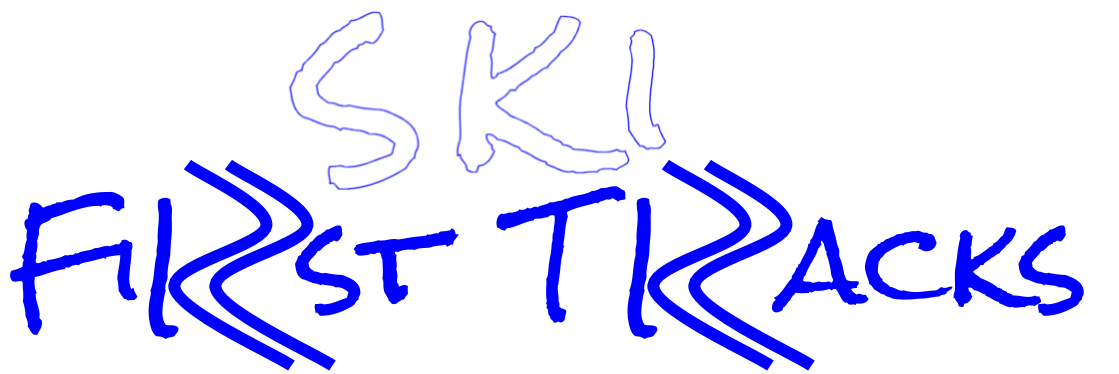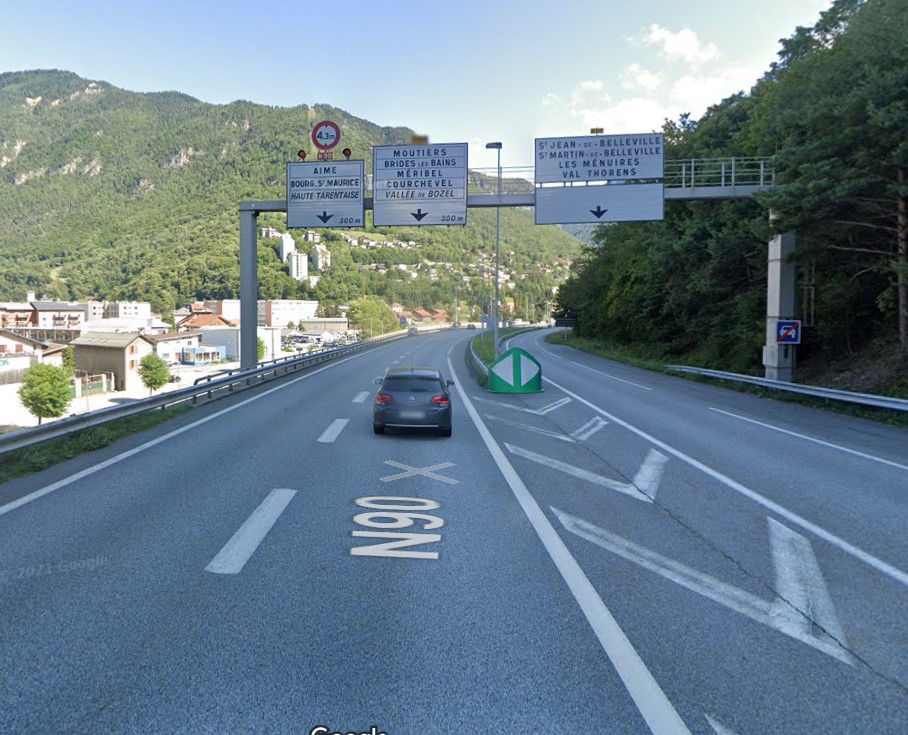This is an update of a blog post I wrote about 4 years ago, where I share my experience of driving from the UK to La Tania – something many people dismiss as really not viable, if they consider it at all, compared to flying. In reality, it’s probably the best (and least stressful) option.
Jump to
When we first started chalet hosting (for Silver Ski) in 2018 very few guests drove to La Tania, mainly because transport was provided as part of the package. For smaller companies like ours, the post-Brexit world is very different and operating in France is significantly more expensive and infinitely more complicated. This means providing flights and transfers is not really a viable option.
The knock-on from this is that more and more people are driving to La Tania. Over the last few years, the proportion of people driving has gradually grown, so that this year it looks like it’s going to be over 50%. There are significant benefits:
- It’s door to door
- It’s arguably less stressful
- You have transport with you during your holiday if you want to venture out and about
- For a group, it will probably work out significantly cheaper
- The journey becomes part of the holiday, rather than a necessary chore to be endured
- You can bring more stuff!
- You’re in charge of your own destiny
I was not someone who, up until we started skiing with the children, had driven long distances in Europe. We had toured in both an elderly motorhome and a car, but at a leisurely pace and never with the sole intention of getting from A to B as quickly as possible, so I was a little apprehensive.
The trick is the 7Ps, which you can find here if you are not familiar with this British Army maxim.
Before we get into the detail of the best way to get from the UK to La Tania by car, allow me a short diversion.
Some five or six years later, Ollie (our elder son, then around 18 or 19) laid a Top Gear type challenge before us one dinner time. “I bet it’s quicker to get to our apartment in Avoriaz by public transport than it is to drive”. I’d love to say we proved this one way or the other empirically, but sadly we never got around to it and had to settle it theoretically. It turns out the car has it by some margin, but then we lived in rural north Devon at the time, so getting to the nearest town on the bus probably took longer than the actual flight.
The first thing to do is get yourself a Télépéage tag. This enables you to go through the péages without stopping and, at some barriers, at up to 30km/h. Not only does this save a lot of time queuing, but you can also have some fun with other UK registered cars following you who may not have the tag….
Ours is a SANEF tag (SANEF operates part of the autoroute network), provided through their ‘Bip&Go’ subsidiary. We are charged 2€ for every month we use the tag (plus tolls, obviously), but they often run promotions which means you may get it more cheaply.
Other companies provide the tags, such as Tollbird, Fulli and UK-based Emovis (who represent SANEF), but he latter’s charges are a little higher.
We always used to use Eurotunnel for our channel crossing. With the children, it was just easier. We saved at least an hour compared to the ferry, which meant we arrived at our usual stop-over in Arras an hour earlier. These days, though, as it’s just Melinda and me we take the ferry and make it more of a road trip. The price works out around the same but it’s just more leisurely and pleasant, especially as we treat ourselves to the Club Lounge, the price for which includes a free ‘as much as you can eat’ breakfast!
Those of you that live near enough to Dover/Folkestone can probably tackle the trip to La Tania in one go, especially if you share the driving. If you live further away, like us, you will almost definitely need to break the journey. We used to leave north Devon at a reasonable hour in the morning, take Eurotunnel in the late afternoon/evening and drive to Arras (about an hour) for an overnight break before heading south the next morning, leaving around six. With stops, that would bet us to the Alps in the late afternoon.
These days we aim to arrive in Dover in the late afternoon and stay in the Premier Inn right next to the ferry terminal. The next morning we take a ferry at around 8am and head south to enjoy the delights that Dijon has to offer. The trip to La Tania the next day is leisurely, full of anticipation as the flat lands of central France transform into the Alps
I know a lot of people like to take a night crossing, and that makes a lot of sense if you are using one of the longer ferry crossings from Plymouth or Portsmouth to Cherbourg or Le Havre which gets you to France at a respectable time after a good night’s sleep. If you are heading for Calais, though, I suggest booking a crossing early in the morning, around 6am to 7am. Driving through the night and arriving in La Tania early for an extra day’s skiing sounds a great idea, but in our experience, you arrive very tired and the last thing you want to do is ski (and it’s probably dangerous). In addition, by the time you’ve arrived, sorted your stuff out, put your kit on and got out on the piste, it’s more like a half day’s skiing
Wherever you’re coming from in the UK, even if it’s the south or south-west, I would always recommend Calais. Not only is the crossing shorter, but your journey in France will be easier too. From nearly all the other ports in northern France, all roads lead to Paris. Le Havre to La Tania is about 60 miles shorter, but the journey is more complicated, and you’ll have to navigate round Paris.
If you have made the wise decision of an early morning ferry crossing from Dover or tunnel from Folkestone and you live more than an hour or so away, you might want to consider staying at the Premier Inn, Dover or the Premier Inn, Folkestone. Not necessarily because they’re clean, comfortable, relatively cheap and have restaurants attached, but mainly because they’re more or less in the ferry port/Eurotunnel Terminal respectively, which means a stress-free start.
Once you get to Calais, you may want to refuel to avoid expensive autoroute prices. Don’t use the Total garage as you leave the Eurotunnel terminal; it’s very expensive and there are nearly always queues. Just before that, there is a turning on the right to the Cité d’Europe. Follow that and the little sign with a petrol pump and ‘7/7’ and you will find a Carrefour filling station which is very cheap (relatively). It’s easy to find and easy to get onto the autoroute. It’s also a good option from the ferry, but a little bit more of a detour.
The trip from Calais to La Tania is 600 miles and takes between 9 and 10 hours. There is usually a lot less traffic on the autoroutes compared to UK motorways, especially on a Sunday, so in our experience the driving is easy and stress-free. It’s a bit boring and flat for the first three-quarters, but once you get down past Dijon things get more interesting as the Alps and their foothills begin to emerge.
If you have managed to get away from the Eurotunnel Calais terminal or ferry port (it takes less than 10 minutes to off-load from either and be away) around 8am, you can expect to be in La Tania between 5pm and 6pm. That’s the perfect time to arrive! Perfect for you as you can offload your luggage in your rooms have a chat with us and head off to the Ski Lodge (other bars are available!) for a pre-dinner drink. It’s perfect for us, as check-in is 4pm earliest, so your room will definitely be ready and we won’t be in the midst of preparing dinner!
Here is the route from the Eurotunnel terminal in Calais (from the Carrefour petrol station you still join the A16 but one junction west):
- Follow the blue signs to the A16 (Dunkerque, Reims);
- Head east on the A16 for about 5k until you get to the junction for the A26
- From there it’s A26 south to Reims
- A short stretch of the A4 around Reims
- A26 again to Troyes
- A5
- A31 to south of Dijon
- A6
- A46, A432 around Lyon (not complicated – follow the Grenoble and Saint Exupéry airport signs)
- A43, becomes A430 after the bridge over the river Arc
- The A430 ends after you cross the Isère and becomes the N90
- N90 to Moutiers. This is the most complicated bit! Don’t come off at J39 or J40 but make sure that AFTER THE J40 JUNCTION you keep right and follow the Courchevel signs (see image). Stay to the right and you will pick up a La Tania sign.
- From there you can’t really go wrong; just follow the La Tania signs!
- As you approach La Tania you will pass the La Tania sign on your right. Take the first left – route du Plan du Saz – and we’re about 500m up the road. See plan.
The route from the ferry is the same, except that you will take the N216/A216 spur, joining the A26 at its junction with the A16.



